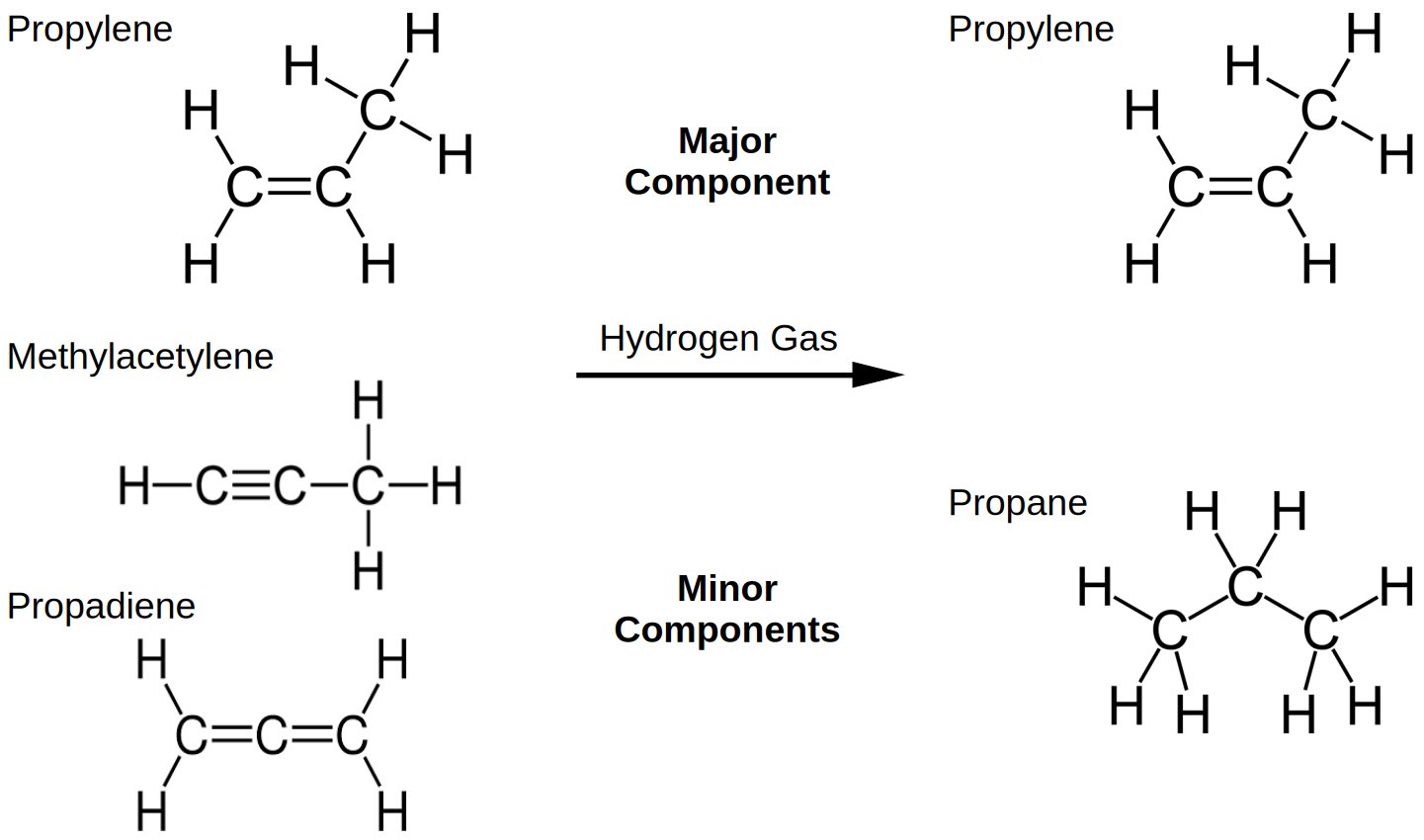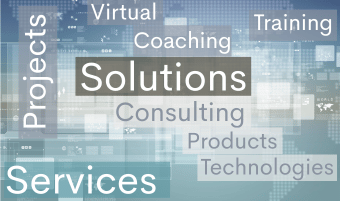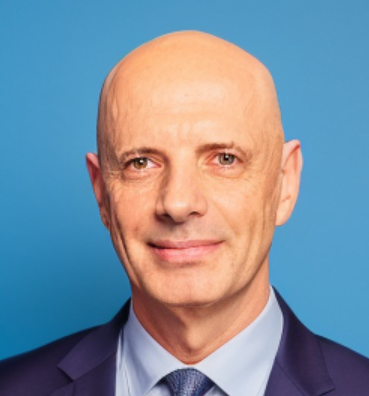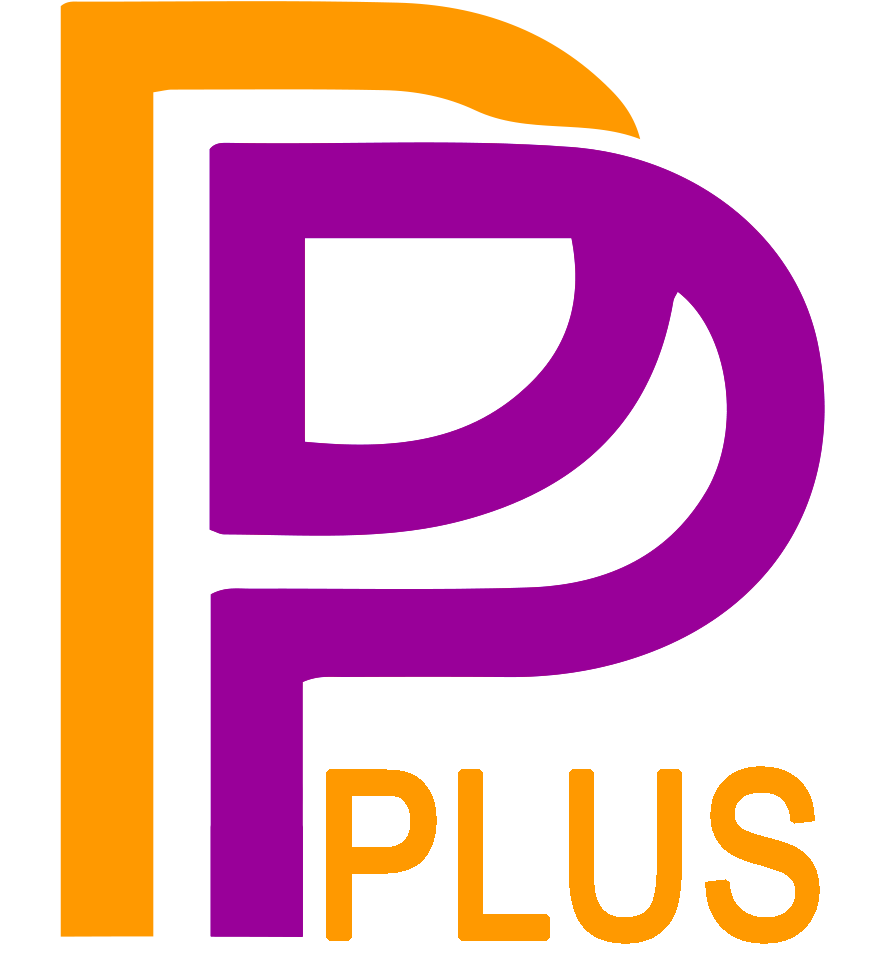Introduction
Methylacetylene-propadiene (MAPD) selective hydrogenation is a vital purification step in steam cracker complexes and propylene production units. The goal is to remove trace MAPD impurities (propyne and allene) from C₃ hydrocarbon streams to achieve high-purity, polymer-grade propylene, essential for downstream polypropylene and chemical processes.
Liquid-phase hydrogenation in a trickle bed reactor (TBR) is the global standard for achieving polymer-grade propylene by removing MAPD from C₃ streams. It combines low temperature operation, superior catalyst selectivity, catalyst longevity, stable and safe process control, and the ability to efficiently handle the highly exothermic hydrogenation of trace contaminants in a robust industrial setting.
Most MAPD/C₃ stream selective hydrogenation processes utilize well-established, public domain reactor designs and operating principles, with the primary proprietary differentiation residing in catalyst formulations, promoter systems, and specific operating conditions; therefore, the generic liquid-phase trickle-bed technology described herein represents the industry-standard approach that can be implemented with catalysts from various commercial suppliers.
Figure 1 - Chemistry of C3 Stream Hydrogenation

Process Overview
Feedstock Characteristics
- Feed: Propylene-dominant C₃ stream from steam cracking or FCC offgas. Typical MAPD in feed: 0.1–2 wt% (often <500 ppm before final purification).
- Impurities: MAPD (propyne + allene), trace dienes, S, As, Hg, oligomers.
Process Objective
- Convert MAPD to propylene with >99.8% removal.
- Minimize loss of propylene via overhydrogenation to propane.
- Prevent formation of oligomers ("green oil") and manage exothermicity.
Catalyst
- Active phase: Palladium (Pd) supported on alumina is industry standard, sometimes with promoters (Ag, Pb, Sn) for increased selectivity.
- Form: Extrudates or spheres, sized to optimize flow and minimize pressure drop.
- Properties: Low green oil formation, long cycle life (typically >12 months before regeneration), stable conversion and selectivity.
Reactor Configuration
- Type: Fixed-bed trickle flow reactor
- Operating regime: Downflow, co-current, two-phase (liquid hydrocarbons + hydrogen gas) through a packed catalyst bed.
- Design: Multiple beds in series may be used for large capacities or staged control.
Equipment Highlights
- Trickle Bed Reactor: Stainless/carbon steel vessel with catalyst bed(s)
- Feed Pumps/Compressors: To maintain phase and pressure
- Hydrogen Feed System: Rate and purity controlled
- Heat Exchangers: For thermal management
- Product Separators: Gas-liquid disengagement, hydrogen recycle
- Online Analyzers: Continuous GC monitoring for MAPD, propylene, propane
Process Flow Description
Feed Preparation:
- Feedstock is filtered and freed from particulates and poisons (especially sulfur, arsenic).
- Liquid phase ensured via feed cooling/pressurization if required.
Hydrogen Addition:
Trickle Bed Reactor Operation:
- Feed (liquid) and hydrogen (gas) co-currently pass downward over the catalyst.
- Highly exothermic hydrogenation is moderated by effective liquid flow (thermal mass), reducing risk of runaway/hot spots.
- Most MAPD is selectively hydrogenated to propylene at mild temperature, optimized H₂:MAPD ratio maintains high selectivity.
- Small amounts of propylene are unavoidably converted to propane; optimization minimizes this loss.
- Operating Conditions
| Parameter |
Typical Range |
| Temperature |
30–60°C |
| Pressure |
15–30 bar |
| LHSV |
2–10 h⁻¹ |
| Hydrogen:MAPD |
1.2–3 molar ratio (excess) |
| H₂ Purity |
>95% |
| MAPD in Feed |
100–2,000 ppm |
| MAPD Out |
<10 ppm (polymer grade) |
- Liquid phase is maintained by adjusting pressure and temperature according to the feed composition.
Product Processing:
- Effluent is degassed; unreacted hydrogen is separated (can be recycled).
- Treated C₃ stream is polished to meet polymer-grade (<10 ppm MAPD) specs.
- Byproducts (trace propane, minimal green oil) are monitored and managed.
Technology Performance
Advantages of Liquid Phase TBRs
- Superior selectivity for MAPD conversion with minimal propylene loss.
- Excellent control of reaction heat, extending catalyst life and preventing reactor fouling.
- Safe, stable, and flexible operation even with MAPD concentration spikes or variable feed.
- Catalyst cycles can exceed a year with proper feed quality and hydrogen management.
- Lower green oil (oligomer) production than vapor-phase alternatives.
Typical Industrial Performance
- MAPD conversion: >99.8%
- Propylene selectivity: >96–98%
- Propane make: <1.5% of propylene
- Final MAPD content: <10 ppm (polymer grade), routinely achieved
References
- Axens. Olefins elective Hydrogenation
- Axens. Selective Hydrogenation Catalysts
- Clariant. Catalysts for Liquid-Phase Selective Hydrogenation of Methylacetylene and Propadiene (MAPD) in "Tail-End" Configurations
- Sinopec. BC-L-83 MAPD liquid phase selective hydrogenation catalyst
- Shell. C2-C5 Hydrogenation
- ABB Lummus. 2003 Technical Bulletin: IndustrialIT for Acetylene/MAPD Hydrogenation.
- BASF. SELOP® Technology
- BASF. 2017 Technical Bulletin: Process catalysts
- Süd-Chemie. Selective Hydrogenation for Steam Crackers – OleMax®
- Süd-Chemie. Catalyst Brochure: Future Perspectives. Uploaded to SCRIBD on Aug 06, 2012.
- D.-J. Vinel. May 13, 2013. Presentation: Alpha-Olefins Production Technologies. Axens Middle East Seminar, Abu Dhabi: Innovative Technologies for Better Competitiveness.
- Wei Wu and Yu-Lu Li. Oct 6, 2010. Selective Hydrogenation of Methylacetylene and Propadiene in an Industrial Process: A Multiobjective Optimization Approach. Ind. Eng. Chem. Res. 2011, 50, 3, 1453–1459. DOI: 10.1021/ie100994j.
- Robert P. Arganbright. International Patent WO1994004477A1: Selective hydrogenation of dienes and acetylenes in C3 streams. Priority Date: Aug 23, 1993. Chemical Research & Licensing Company.
- Stephen J. Stanley, Gary R. Gildert. United States Patent US6414205B1: Process for the removal of MAPD from hydrocarbon streams. Priority Date: Mar 24, 200. Catalytic Distillation Technologies.
- Emerentino B. Quadro. Apr 2, 2019. Modelling of an Industrial Trickle Bed Reactor for Mapd Selective Hydrogenation with CFD Assistance. AIChE Annual Meeting (2010).











